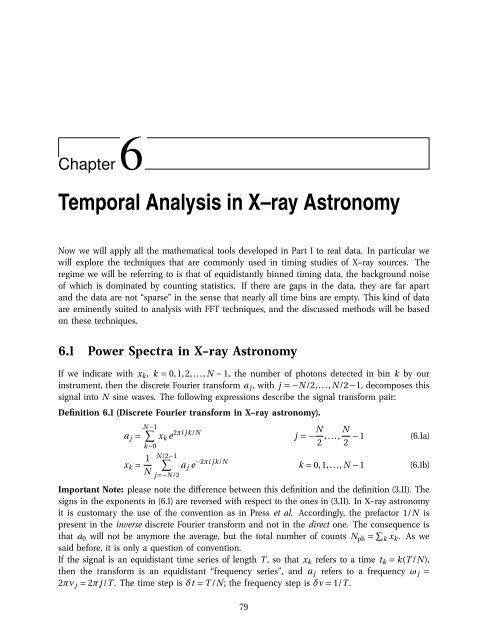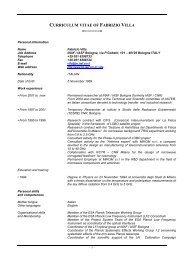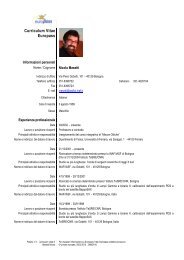booklet format - inaf iasf bologna
booklet format - inaf iasf bologna
booklet format - inaf iasf bologna
You also want an ePaper? Increase the reach of your titles
YUMPU automatically turns print PDFs into web optimized ePapers that Google loves.
Chapter6<br />
Temporal Analysis in X–ray Astronomy<br />
Now we will apply all the mathematical tools developed in Part I to real data. In particular we<br />
will explore the techniques that are commonly used in timing studies of X–ray sources. The<br />
regime we will be referring to is that of equidistantly binned timing data, the background noise<br />
of which is dominated by counting statistics. If there are gaps in the data, they are far apart<br />
and the data are not “sparse” in the sense that nearly all time bins are empty. This kind of data<br />
are eminently suited to analysis with FFT techniques, and the discussed methods will be based<br />
on these techniques.<br />
6.1 Power Spectra in X–ray Astronomy<br />
If we indicate with x k , k = 0,1,2,..., N − 1, the number of photons detected in bin k by our<br />
instrument, then the discrete Fourier transform a j , with j = −N /2,..., N /2−1, decomposes this<br />
signal into N sine waves. The following expressions describe the signal transform pair:<br />
Definition 6.1 (Discrete Fourier transform in X–ray astronomy).<br />
N−1 ∑<br />
a j = x k e 2πi j k/N j = − N 2 ,..., N 2 − 1 (6.1a)<br />
k−0<br />
x k = 1 N<br />
∑<br />
N /2−1<br />
j =−N /2<br />
a j e −2πi j k/N k = 0,1,..., N − 1 (6.1b)<br />
Important Note: please note the difference between this definition and the definition (3.11). The<br />
signs in the exponents in (6.1) are reversed with respect to the ones in (3.11). In X–ray astronomy<br />
it is customary the use of the convention as in Press et al. Accordingly, the prefactor 1/N is<br />
present in the inverse discrete Fourier transform and not in the direct one. The consequence is<br />
that a 0 will not be anymore the average, but the total number of counts N ph = ∑ k x k . As we<br />
said before, it is only a question of convention.<br />
If the signal is an equidistant time series of length T , so that x k refers to a time t k = k(T /N ),<br />
then the transform is an equidistant “frequency series”, and a j refers to a frequency ω j =<br />
2πν j = 2πj /T . The time step is δt = T /N; the frequency step is δν = 1/T .<br />
79

















